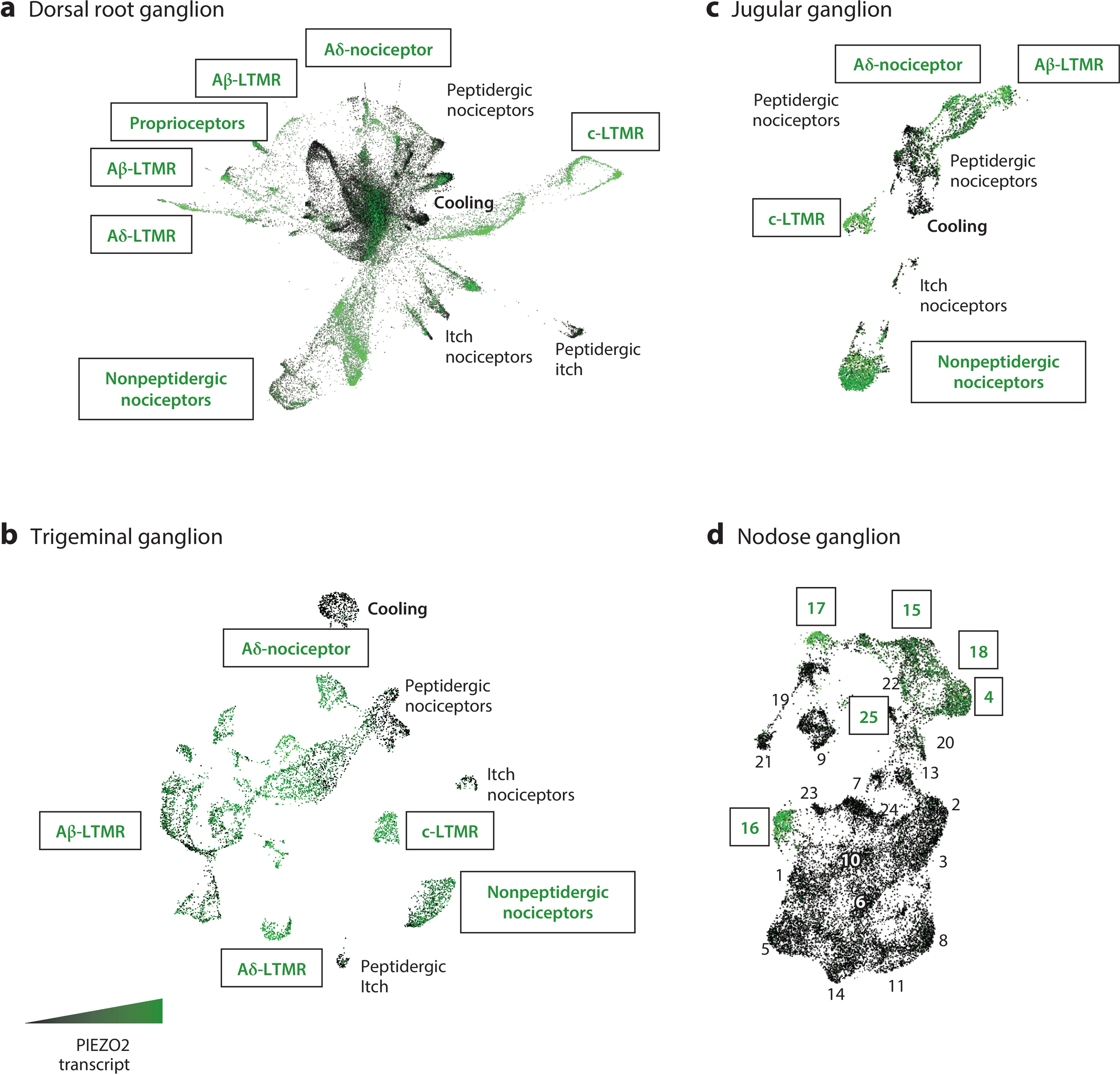Figure 2.

The expression of PIEZO2 in mouse sensory neuron classes. Single-cell RNA sequencing data from four distinct peripheral ganglia are shown: dorsal root, trigeminal, jugular, and nodose. For each ganglion, transcriptomic cell classes are given in the UMAP plots with PIEZO2 expression level visualized and color coded by high expression (green) or no expression (black). (a) Single-cell sequencing from isolated dorsal root ganglia neurons across development, with the earliest embryonic time points at the center of the UMAP and adult neurons at the outer edges (100). (b) Single-nucleus sequencing of trigeminal ganglia. Note that the more prominent representation of Aβ-LTMRs is likely to be the result of the nuclear isolation method (106), which better captures large-diameter neuron subtypes that are normally lost during single-cell isolation. (c) Single-cell sequencing of the vagal complex shows that cell classes in the jugular ganglia are transcriptomically analogous to those found in the dorsal root and trigeminal ganglia. (d) The nodose ganglion, on the other hand, is comprised of transcriptomically and functionally unique sensory neurons (105). The labels for classes of neurons with high PIEZO2 expression are boxed, while those with low or no expression are in italics. Panel a adapted with permission from Reference 100, panels b and d adapted with permission from Reference 105, and panel c adapted from Reference 106. Abbreviations: LTMR, low-threshold mechanoreceptor; UMAP, uniform manifold approximation and projection.
